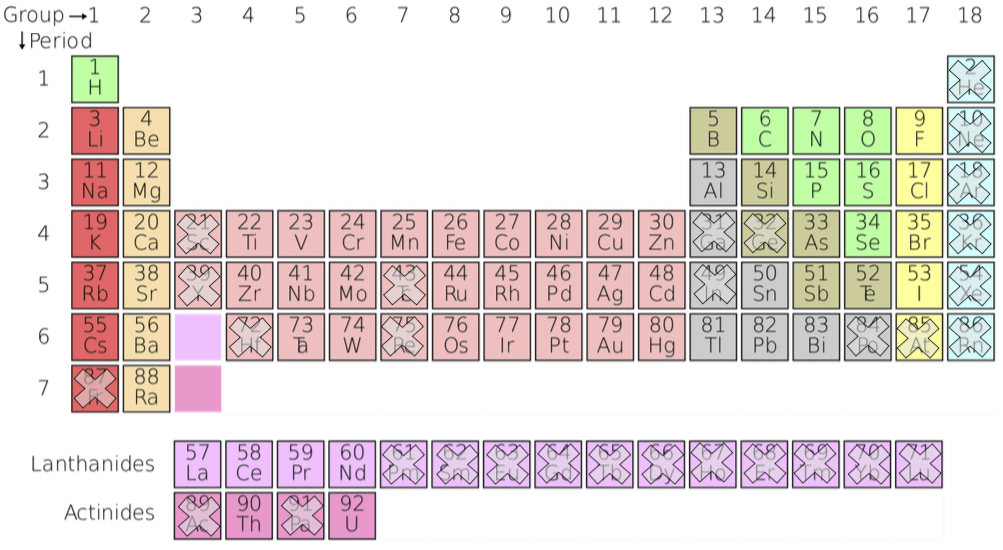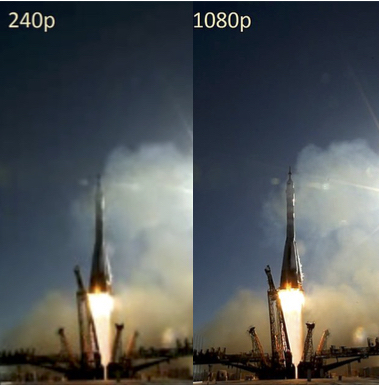Pixelated Knowledge
Analogies and thought experiments are really useful ways to gain insights into something we are trying to understand better. They can sometimes bypass the boring details or the hard to understand intricacies of a subject, and by posing scenarios that are either rare or impossible in real life, like winning the lottery or being invisible, we can find new pathways to understanding.
ImagefromWikimedia Commons - Oaktree b
So imagine that the evidence for our understanding of something, like evolution, quantum mechanics or gravity, can be represented by a bitmap image. The first thing we can say is that there will be missing pixels. Even with the things we know a lot about, like electricity, there are still quantum mechanical things we don’t fully understand. The most interesting thing about missing pixels and its knowledge equivalent is that even with half the pixels missing we can still have a pretty good idea of what we are looking at. The example left, with 30% missing, is a bit of a cheat because the image is a familiar one, but it would work just as well if it were unfamiliar.
Scientists constantly work to fill gaps in our knowledge. It is possible to best guess the spec of a missing pixel in an image by extrapolating from the pixels that surround it. In fact this was done to produce the Mona Lisa on the right. Similarly gaps in knowledge can be guessed at by studying the context that it sits within. We will have some idea of what we are looking for. Designing new experiments or making appropriate observations can test the ideas that this generates.
For example, Einstein predicted gravity waves in 1915 and it remained a speculative part of the overall picture of gravity until 2016, when they were finally observed. Turning this speculative knowledge pixel into fully-fledged one strengthened the validity of all the pixels that surrounded it. It fit neatly into Einstein’s description of gravity.
Elements higher than Uranium are removed because they are unstable and don't occur naturally in nature. Source - Wikipedia, Agung Karjono
The best example of the missing pixels analogy is the periodic table of elements. it's nice because it's sort of pixilated itself. In the 1860s and 70s Dmitri Mendeleev was trying to construct a table of elements that made sense of their weights and characteristics. He noticed a recurring pattern of elements that shared the same characteristics but couldn't get the table to work. The moment of revelation came when he realised that there must be elements missing, elements that had not yet been discovered. In fact Mendeleev only knew of 60. Eventually he worked out the pattern; every eighth element shared the same characteristics. Not only was he able to identify the gaps, but he even accurately predicted what their weights and characteristics would be. The periodic table here shows where the gaps were at the time of Mendeleev.
The colour of the missing pixel is 'guessed' by averaging the colour of the 8 surrounding pixels. Source - Me
Mendeleev filled the gaps by studying the elements he knew, just as a missing pixel in an image is determined by studying the 8 pixels that surround it.
As well as missing pixels in an image there will be pixels that are wrong. There may even be a cluster of them in one part of the image, perhaps a fault in the camera or some debris on the lens, which can be corrected by taking another picture or using some imaging software. Similarly for 228 years our picture of gravity was mostly Isaac Newton’s description. Then Einstein came along and corrected bits of it. The potential for other bits of our gravity image turning out to be wrong in the future is assumed to be possible in science, which is why certainty is inappropriate if the journey towards being less wrong is to be maintained.
Youtube resolution comparison using NASA and Roscomos imagery. Source - Wikimwedia, NASA
Another characteristic of bitmaps is the resolution. Essentially this is the size of the pixels relative to the detail in the scene. Too few pixels produce a fuzzy image with detail difficult to make out. The more pixels there are, the more detail is revealed. Suppose we start with a single large pixel and divide it vertically and horizontally to get four smaller pixels, revealing a greater level of detail. We could do the same thing again so that we go from 1 pixel to 4 then 16 then 64 and so on. Each time we are delving deeper into the detail of the image. You can see from the example left how detail like the ring half way down the top spike and the struts forming the gantries below emerge as you go from left to right.
Because scientists have a wide variety of preferences for where they start to investigate something, we can think of the pixilated knowledge model for that something to be layered from broad at to top to detailed at the bottom. Each layer from the top down addresses a greater level of detail. Imagine a pixel on the top layer that has remained blank for some time. People working on the layer of detail below may gather sufficient evidence to light that pixel up, even if they don't have all four of the pixels underneath. This can be repeated in the layer below with some of the sixteen also missing. In this way there will be gaps at all levels of detail, with cross pollination from above and below contributing to their resolution. So people working in the different levels of detail, could be and usually are spread around the globe, working in their own chosen speciality, but connected in multiple ways to all the others studying that broader area of knowledge. Through this layered interconnectedness, contradiction and evidenced challenges to established understanding stick out like the proverbial sore thumb, and are not left festering for long.
Having said that, some unresolved issues can remain on the books for a long time and exercise scientific mind to the point of mental exhaustion. Perhaps the most recent one is our failure to resolve the conflicts that arise in the boundary between relativity and quantum mechanics, where relativity deals with the universe on a large scale and quantum mechanics deals with it at the atomic and sub atomic scale.
I have built this model as clearly defined layers which is conceptually useful but way too simplistic. The reality is much more messy.
In one of my moderately boozy nights out with nerdy friends we were discussing the certainty or doubt question. We had to shout a lot because it was a particularly noisy pub. I was indulging in my usual assertion that the pursuit of knowledge has no place for certainty, when my friend Alex challenged me with the following scenario:
Suppose you have in your hand an object that is heavier than air. Are you telling me that you are not certain it will fall to the ground if you let go?
He had me. I knew I had a good answer in my head somewhere but I’d had a few pints and a couple of Proseccos by this time, so I conceded the point and we moved on to other nerdy things. That night I couldn’t sleep for thinking about what I should have said and called upon my trusty pixel analogy for the answer. It goes something like this.
If the whole history of our understanding of gravity were represented as a bitmap, it would be as a long strip (like the Bayeux Tapestry) with length being the timeline and the right hand edge blurred by the addition of new knowledge being added over time. The image would contain all the mistakes as well as their subsequent corrections. It is perfectly true that there will be many parts of this image about which I would be happy to say I’m certain are true. But that isn’t what I care about. They are the least interesting things about gravity. What really gets me up in the morning is the journey. What things are still uncertain, and what do we need to do to be more confident in them, and most important; what will I learn about gravity tomorrow?
Maybe next time Alex and I get together I will be sober enough give him my answer.
Update: I was sober enough, but he still thought I was wrong!




